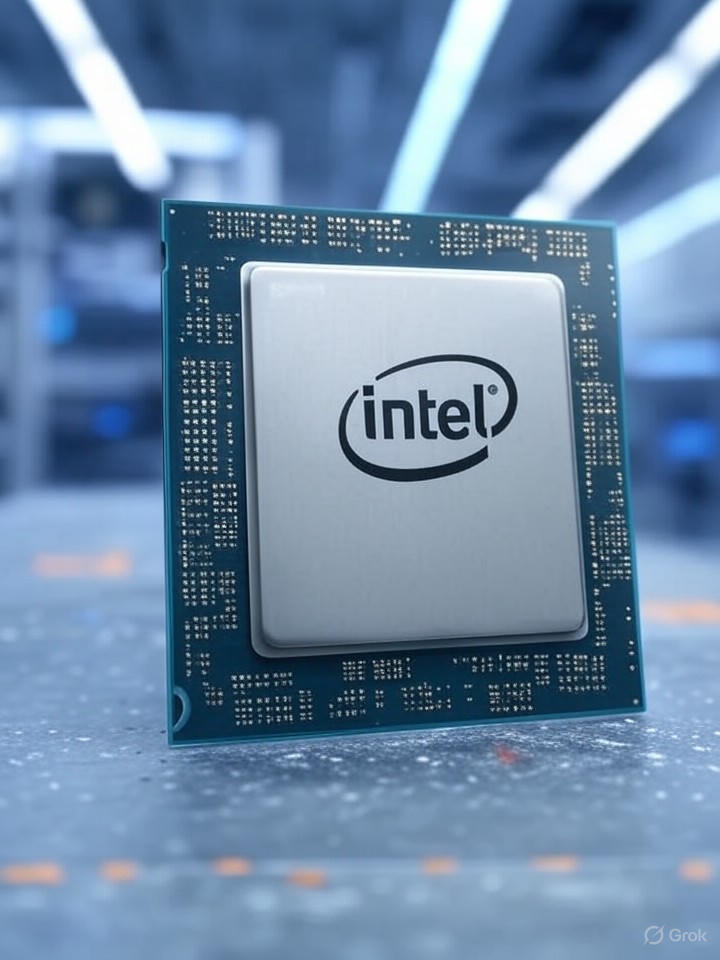Is SoftBank's $2B Investment in Intel the Key to a Major Turnaround?

Understanding the Semiconductor Landscape: SoftBank's $2 Billion Bet on Intel
In an era defined by fierce competition for semiconductor supremacy, SoftBank Group Corp. has made headlines with its recent $2 billion investment in Intel Corp. By purchasing shares at $23 each, SoftBank has secured about a 2% stake in the troubled American chip giant. This strategic move marks SoftBank as one of Intel's top-10 shareholders, providing a much-needed capital infusion at a pivotal time for the company. With manufacturing issues and significant competitive pressures from industry rivals like Taiwan Semiconductor Manufacturing Co., this investment also underscores broader trends in semiconductor production in the United States, spurred by initiatives such as the CHIPS and Science Act.
The reality is that Intel is not just facing operational challenges; it has also reported a staggering net loss of $2.9 billion in its fiscal second quarter. This context makes SoftBank's investment not only timely but also potentially transformative for both entities. As the global semiconductor market continues to evolve, this partnership may serve as a crucial linchpin in aligning both companies' ambitions, particularly in artificial intelligence and chip design.
The Strategic Rationale Behind SoftBank’s Bet on Intel
Analysts are viewing SoftBank's investment in Intel as more than mere financial support; it represents a strategic entry point into the U.S. semiconductor ecosystem. With SoftBank's increasing focus on AI infrastructure, following its $30 billion commitment to OpenAI, the collaboration could leverage Intel’s foundry services for custom AI chips. This follows a previously proposed partnership that was abandoned due to disagreements over competitive dynamics with Nvidia Corp. The renewed interest in collaboration signals a shift in strategy that could be mutually beneficial.
Geopolitical tensions add another layer of complexity to this investment. Recent calls from U.S. President Donald Trump for Intel CEO Pat Gelsinger's resignation due to supposed ties with Chinese firms highlight the scrutiny faced by American technology companies. Even as discussions of a potential 10% government stake in Intel arise, SoftBank's decision stands apart, indicating a level of independence in its investment strategy.
Intel’s Challenges and the Broader Industry Context
Intel is currently navigating a turbulent landscape. The company's stock has plummeted by over 50% this year, largely due to delays in its 18A process node and increasing competition in the AI accelerator market. Despite efforts to expand its foundry operations—backed by a colossal $108.5 billion investment supported by the CHIPS Act—Intel continues to struggle in regaining market share. The latest quarterly results show revenue declines in significant segments, which raises questions about its long-term viability.
Globally, various governments are recognizing the strategic importance of semiconductor production and are investing heavily. China's commitment of $47 billion, the EU's $46 billion, and Japan's $25 billion initiatives reflect a global trend toward bolstering domestic chip industries. In this context, SoftBank's investment may not only provide Intel with a financial cushion but could also catalyze future collaborations that integrate Intel's x86 architecture with Arm's designs, paving the way for innovative hybrid AI systems.
Implications for AI and Semiconductor Innovation
For SoftBank, this investment enhances an already robust portfolio focused on AI. The company’s ambitious Project Stargate, with a staggering $500 billion allocation, could find new synergies through its partnership with Intel. Insiders suggest that this stake could open doors to collaborative research and development efforts aimed at addressing Intel’s pressing needs for AI-focused innovation, especially in light of Nvidia's market dominance. The acquisition of a 2% stake at a discounted rate exemplifies SoftBank's opportunistic approach to undervalued tech assets.
Looking ahead, this partnership may also influence U.S. policy, especially concerning workforce training initiatives. Intel’s commitment of $50 million under the CHIPS Act funding could align with SoftBank’s global talent development programs, fostering a new generation of skilled workers in the tech industry. However, challenges remain. Intel's success will depend heavily on its ability to execute a robust turnaround strategy, while external factors, such as escalating U.S.-China trade tensions, could complicate supply chains.
Market Reactions and Future Outlook
The market has responded favorably to SoftBank's investment, with Intel shares surging in after-hours trading. Analysts have noted that this deal could significantly influence the semiconductor market landscape. According to projections from JPMorgan, the rising demand for AI compute could generate an estimated $30 billion in revenues for partners like Broadcom Inc., hinting at potential ripple effects for Intel and its partners.
Ultimately, SoftBank's investment provides Intel with the financial breathing room it desperately needs to innovate. However, the success of this partnership will hinge on navigating regulatory scrutiny and addressing technological challenges. As the semiconductor sector continues to evolve, the alliance between SoftBank and Intel could redefine collaborations between Asian investors and U.S. tech giants, thereby driving advancements in AI and other critical technologies.
Frequently Asked Questions
Why did SoftBank invest in Intel?
SoftBank invested in Intel to secure a strategic foothold in the U.S. semiconductor ecosystem, align with its ambitions in AI, and provide much-needed capital to help Intel navigate its current challenges.
What are the implications of this investment for the semiconductor industry?
This investment could catalyze further alliances in the semiconductor industry, integrate different chip architectures, and influence U.S. policy regarding workforce training and domestic production initiatives.
How does this affect Intel’s financial situation?
SoftBank's investment provides Intel with a financial cushion that may help it innovate and improve its market position amid ongoing operational difficulties and competitive pressures.
What challenges does Intel face moving forward?
Intel faces significant challenges, including regaining market share, executing its turnaround strategy, and navigating regulatory scrutiny amid geopolitical tensions.
As we look to the future, the stakes in the semiconductor industry have never been higher. How will this investment reshape the competitive landscape, and what innovations can we expect to emerge from this partnership? #SoftBank #Intel #Semiconductors
Published: 2025-08-19 03:29:45 | Category: Trump GNEWS Search



